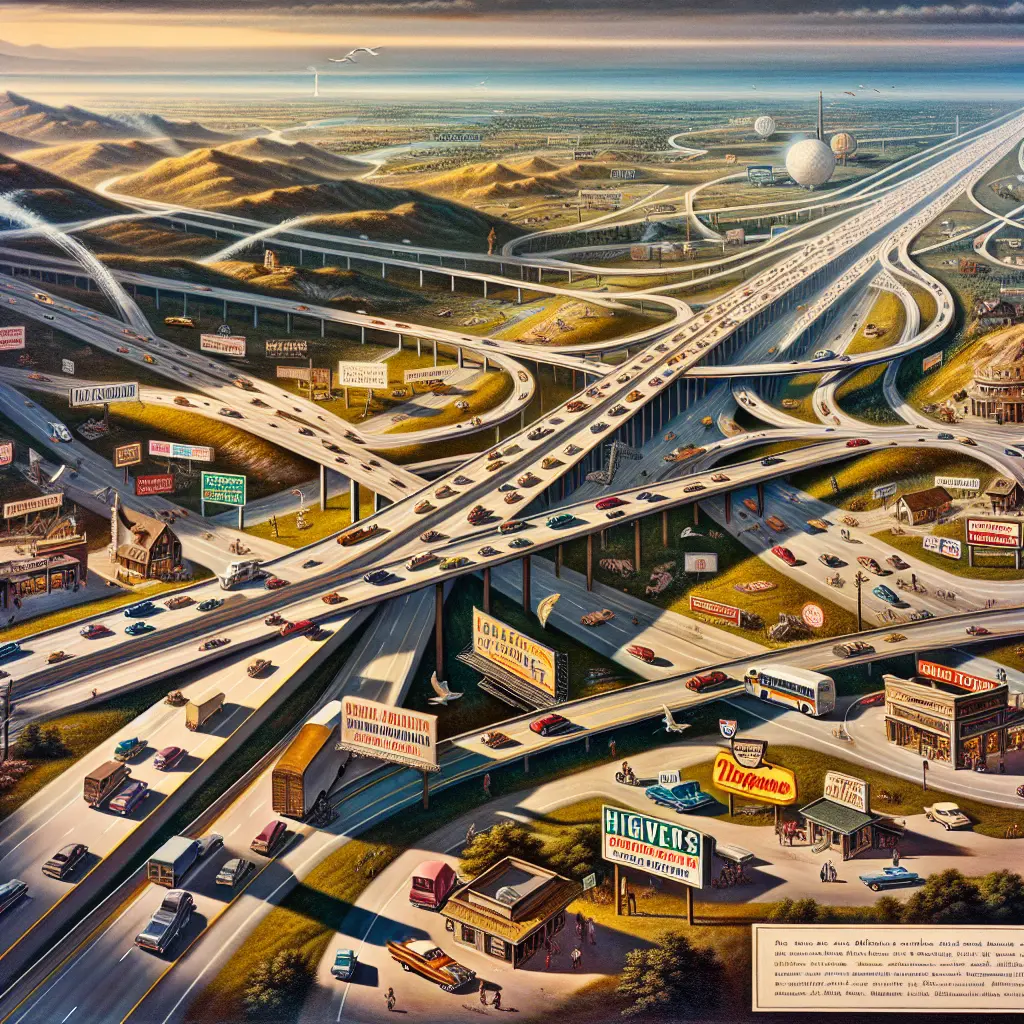
The American Highway System stands as a pivotal force in shaping modern travel. This extensive network of interstate and U.S. highways has not only transformed American roadways but also significantly influenced how people experience travel. By examining the intricate web of highway infrastructure, we can appreciate its profound impact on transportation development, road trip culture, and economic growth.
A Catalyst for Travel Innovation
At the heart of the highway system's success is its role as a catalyst for travel innovation. Seamless interstate travel has become a reality, connecting distant corners of the nation and making spontaneous road trips or cross-country adventures more accessible than ever. This network has placed convenience and efficiency at the forefront of U.S. travel trends. Whether for family vacations or business logistics, the highway system's benefits are undeniable.
The 2024 Paris Olympics highlight the importance of modern transportation systems in global events. Google's innovative TV and Play features, part of their role as "Official Search AI Partner" for Team USA, demonstrate how technology and travel infrastructure converge to enhance experiences for athletes and fans alike (learn more about Google’s role). This intersection shows that highway travel impacts not just leisurely trips but also large-scale international gatherings.
Highway System Influence on Road Trip Culture
The highway system has also fostered a thriving road trip culture. The freedom and flexibility offered by interstate highways encourage countless travelers to explore iconic landmarks and hidden gems. This culture is deeply ingrained in American travel history, reflecting a spirit of adventure that defines the nation’s identity.
Consider the Mini Cooper SE—a compact electric vehicle popular among eco-conscious travelers. Its ability to mimic the classic Mini sound provides nostalgia for those traversing America's highways (explore Mini Cooper SE's features). The rise of such vehicles represents a shift in travel evolution, where sustainability meets tradition on U.S. highways.
Economic Development Along Highway Corridors
Economic development has thrived along highway corridors. Businesses benefit from increased accessibility and traffic flow, while once-isolated towns have been revitalized with new opportunities as more travelers pass through.
A compelling example is how U.S. highways contributed to Team USA's success at the 2024 Paris Olympics. Athletes and fans navigated interstate highways to various training venues and events, showcasing how seamless connectivity supports logistics for both leisure and competitive sports events (read about Olympic logistics).
Highway History: A Story of Transformation and Adaptation
The history of U.S. highways is a tapestry of transformation and adaptation. From humble beginnings to becoming integral parts of American infrastructure, these roads continually adapt to meet modern travelers' needs.
Recent advancements include smart highway technology and improved safety features aimed at enhancing travel experiences while reducing environmental impact (discover smart highway innovations). These innovations demonstrate the ongoing evolution of U.S. highways in response to contemporary challenges.
Challenges and Future Directions
Despite its successes, the American Highway System faces challenges such as congestion, maintenance costs, and environmental concerns. Addressing these issues is crucial to ensuring that the highway system continues to support modern transportation needs.
Integrating electric vehicle (EV) infrastructure into highway development plans is a promising direction. The growing popularity of EVs like the Mini Cooper SE highlights the importance of enhancing charging networks along interstate highways for sustainable travel trends (learn about EV infrastructure). By focusing on green initiatives, the highway system can align with environmental priorities.
Conclusion: Navigating the Legacy and Future of American Highways
The American Highway System is more than a collection of roads; it's a testament to connectivity and innovation's power. Its role in shaping modern travel influences economic growth, cultural exploration, and transportation innovation. Here are key takeaways:
Travel Innovation: The highway system enhances travel convenience and efficiency, impacting everything from road trips to logistics for major events like the Olympics.
Road Trip Culture: Interstate highways foster a vibrant road trip culture, embodying American identity's adventurous spirit.
Economic Development: Highways revitalize towns and support economic growth by improving accessibility and fostering business opportunities.
Historical Adaptation: U.S. highways have evolved into essential infrastructure components, adapting through advancements like smart technology.
Future Challenges and Directions: Addressing congestion and environmental impact is crucial. Integrating EV infrastructure is vital for sustainable growth.
Reflecting on these points reveals that each mile offers new potential for discovery and growth. As you plan your next journey, consider contributing to this evolving narrative. How have highways shaped your travels? Share your stories as we explore the ever-expanding road ahead.
Author: Felicity Harwood